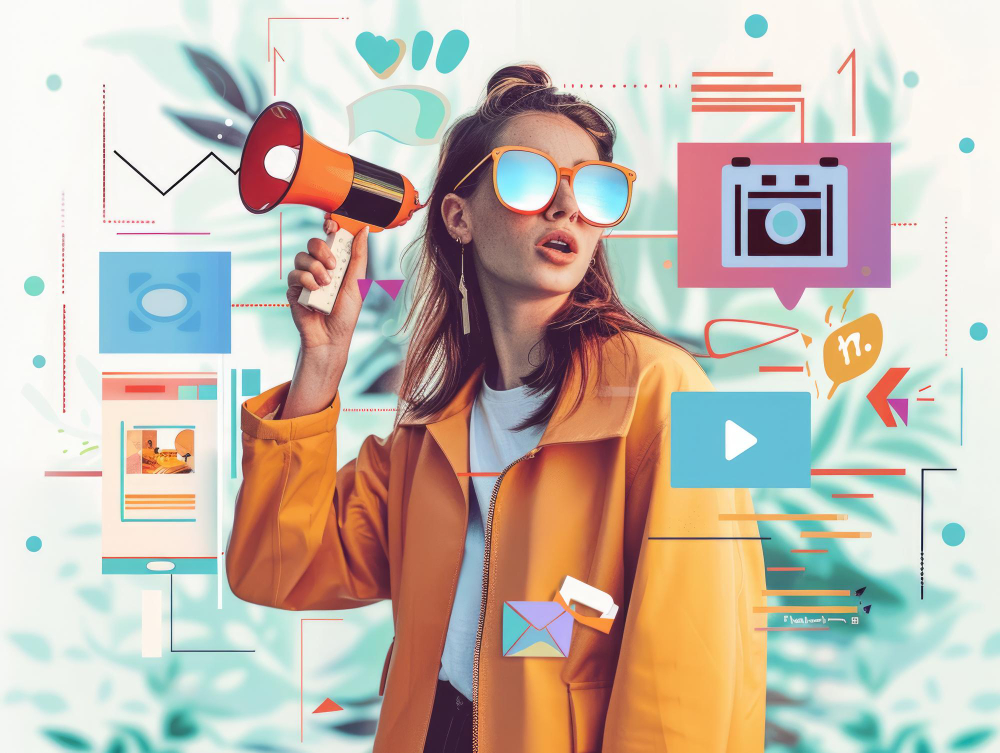
How Programmatic Advertising Supports the Growth of OTT Platforms in MENA
April 12, 2025
The Rise of Shoppable Programmatic Ads: Bridging Content and Commerce
April 16, 2025
Programmatic Advertising and Influencer Marketing: A New Hybrid Approach
Introduction
The digital marketing landscape is continuously evolving, with brands increasingly blending performance-driven approaches with authentic, human-centric content. One of the most powerful combinations emerging in 2025 is the hybridization of programmatic advertising and influencer marketing.
On one side, programmatic offers precision targeting, automation, and scale. On the other, influencer marketing delivers authenticity, relatability, and trust. Together, they form a dynamic synergy where data meets creativity, and automation meets human influence. This blog explores how these two disciplines are merging to create more effective, measurable, and scalable campaigns.
The Strengths of Both Worlds
Programmatic Advertising
Programmatic advertising uses real-time bidding and AI-powered algorithms to purchase ad inventory across digital platforms. Its benefits include:
Audience targeting precision: Based on demographics, behavior, location, and device usage
Automation at scale: Real-time optimization of ad delivery
Transparent measurement: Impressions, clicks, conversions, ROAS, and more
Omnichannel reach: Across display, video, CTV, audio, and mobile
Influencer Marketing
Influencer marketing taps into the personal connection between content creators and their audiences. Key advantages include:
Authentic storytelling
High engagement and trust
Niche community access
Stronger brand recall
The catch? It’s often hard to scale and measure precisely.
The Need for Integration
The current challenge for brands lies in bridging the performance-measurement focus of programmatic with the human touch of influencer marketing. Influencer campaigns may work well on engagement metrics, but lack standardized tracking or optimization. Meanwhile, programmatic can miss the emotional connection needed for today’s attention economy.
Enter: the hybrid approach.
What Is the Hybrid Model?
This new model combines influencer-created content with programmatic distribution techniques. Brands use influencers to generate authentic, high-quality content, then amplify that content using programmatic platforms—ensuring it reaches the right audience at the right time, with precise targeting.
This approach is often called:
Influencer whitelisting: Where creators give brands permission to run paid ads from their handles
Programmatic content boosting: Where influencer videos or posts are integrated into a programmatic media buy
Creator licensing + programmatic amplification
How the Hybrid Model Works
Content Creation by Influencers
Influencers develop content that aligns with brand messaging and resonates with their audience—product reviews, tutorials, reels, etc.Content Licensing & Whitelisting
The brand obtains rights to repurpose this content through paid media channels, including Meta, YouTube, or programmatic video exchanges.Programmatic Distribution
Using DSPs (Demand Side Platforms), the licensed content is then served to hyper-targeted audiences across devices and formats—CTV, in-app, display, and more.Performance Optimization
Real-time data informs which creatives perform best, allowing brands to test, refine, and scale.
Key Benefits of the Hybrid Approach
1. Extended Reach Beyond the Influencer’s Audience
You’re no longer restricted to the influencer’s organic following. Programmatic ensures content reaches lookalike audiences, custom segments, or geo-targeted regions.
2. Enhanced Measurement and Attribution
Track detailed KPIs like viewability, engagement, click-throughs, conversions, and ROI—something traditional influencer marketing often lacks.
3. Content Longevity and Reusability
Great influencer content doesn’t have to fade after a single post. It can be repurposed into ads, landing pages, or email marketing assets.
4. Brand Safety and Transparency
Programmatic platforms provide tools to ensure influencer content runs in brand-safe environments, with fraud detection and audience verification.
Use Cases in Action
FMCG Brands: Use micro-influencers to create snackable content, then amplify through programmatic to drive in-store traffic.
Luxury or Fashion: Collaborate with stylists or lifestyle creators, and run their content on high-end CTV or in-app placements.
Healthcare or Pharma: Use doctor influencers for awareness, then reach multilingual, niche health audiences programmatically with compliance.
Retail & E-commerce: Boost influencer-generated tutorials to retarget abandoned cart users.
Challenges to Watch
While promising, this approach isn’t without hurdles:
Rights management: Always clarify content usage and whitelisting terms with influencers.
Creative fatigue: Over-amplifying one creative can reduce effectiveness—plan for variations.
Platform compatibility: Not all DSPs or formats support influencer content natively—choose wisely.
Audience overlap: Ensure retargeting strategies don’t result in frequency fatigue among viewers.
Final Thoughts
As consumer trust in traditional ads continues to decline, authentic storytelling and community-driven content are becoming essential. Meanwhile, brands still demand scale, targeting, and measurable ROI.
The hybrid of programmatic advertising and influencer marketing presents a powerful path forward—where storytelling meets strategy, and creators become media partners.
By combining the emotional connection of influencers with the precision of programmatic, marketers can craft smarter, scalable, and more resonant campaigns in the years ahead.
Meta Description:
Explore how programmatic advertising and influencer marketing are converging to form a hybrid model that offers authenticity, reach, and measurable ROI.
SEO Keywords:
Hybrid Influencer Programmatic, Programmatic Influencer Marketing, Whitelisting Influencers, Boosted Influencer Content, Influencer Ads Programmatic

